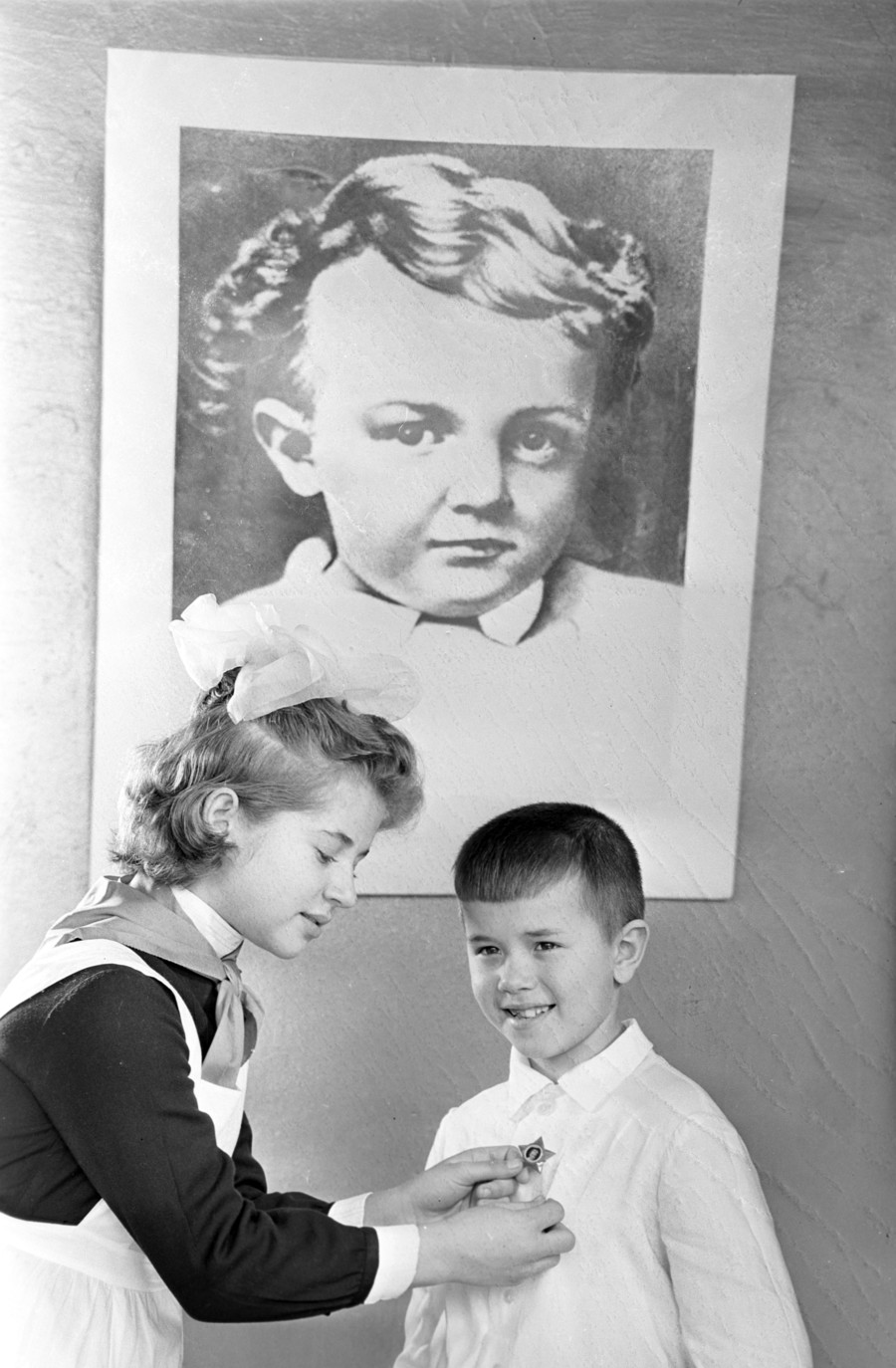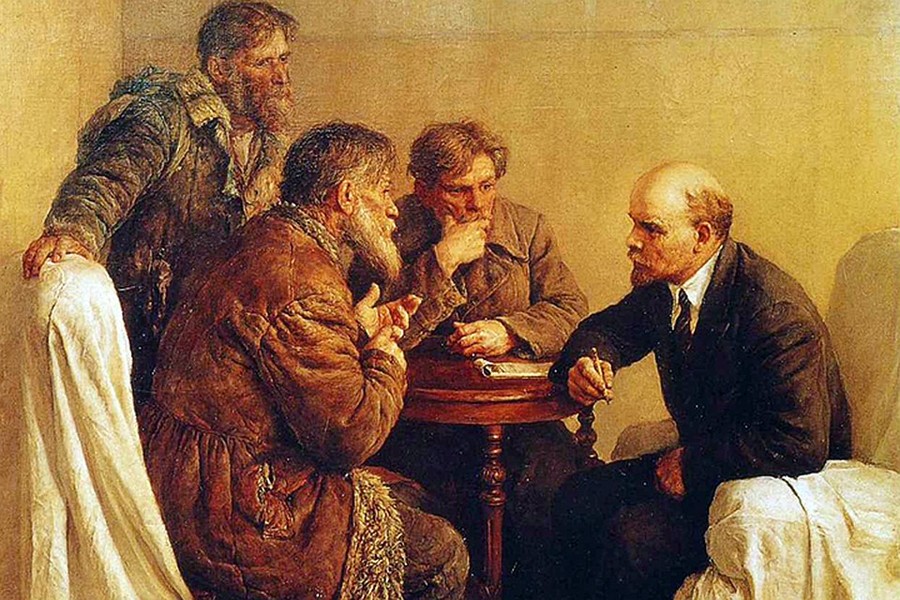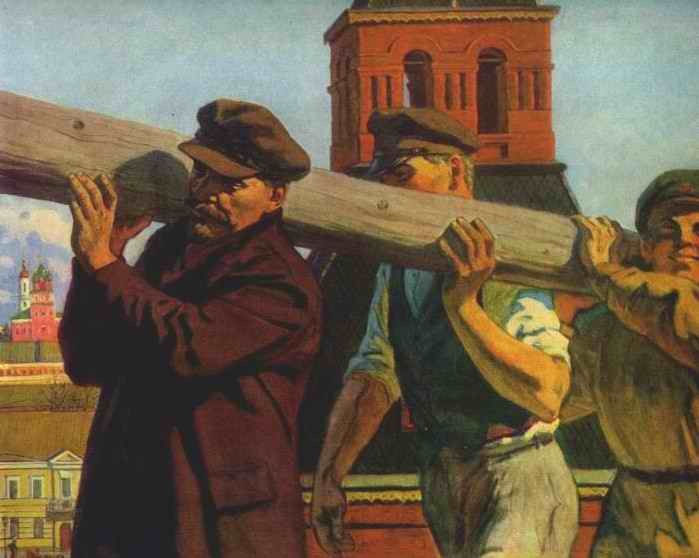A interesting article on McCain from RT comparing the myth-making of Lenin to the current glorification of McCain by the MSM:
MSM one step away from McCain myth-making – well, you can learn from Lenin classic!
With the US media venerating the late John McCain, one can only wonder if the stories will soon cross into the realm of pure mythology. If so, Russia's Soviet history may offer the MSM some quality myth-making inspiration.
The 'nil nisi bonum' maxim became a matter of utmost importance in the case of McCain. His many panegyrists are praising his wartime heroism, personal integrity and, of course, resolve in standing up to dictators abroad (and in the White House). Those who dare
mention his history of warmongering, occasional personal meanness, or record of voting for Trump's policies are disregarded as vile and disrespectable individuals.
Stories about how McCain
acted in this or that situation, proving his greatness, came in droves. Remember how he
defended his opponent, Barack Obama, for being smeared as an Arab? (Don't ask why calling a person an Arab is a smear in America). How he championed human rights in Ukraine? (By supporting, among others, an openly neo-Nazi protest leader). Or how he helped
save the Cuban home of his favorite author Ernest Hemingway (by stepping over his hatred of its communist government and leaning on Cuba-hating bureaucrats in the State Department to give a waiver to US citizens wishing to help restore it).
If this beneficiation of the late senator goes further, it will likely come into the territory of tall tales and pure legend, where the six-year-old George Washington cannot tell a lie to his father about cutting down the cherry tree while Betsy Ross decides the design of the American flag.
Russia may not have been among McCain's favorite countries, but it can offer its own experience of turning a political figure into the embodiment of an ideology. Vladimir Lenin was famously turned from a Bolshevik leader into a not-so-living legend by his fellow communists. So, if future authors of McCain tales need inspiration, here are some.
When Lenin was a little kid
Much like Washington, Lenin's image was used to teach good examples to young children in the Soviet Union. One apocryphal story is pretty much the same as the one about the first US president and the cherry tree – a young Lenin breaks a glass beaker and confesses his misdeed.
FILE PHOTO. © Vladimir Vdovin / Sputnik
A good Soviet kid was expected to wear a little star badge with a young Lenin's portrait in its center, by the way.
Soviet children join the ‘little Octobrists’ in front of a portraint of a three-year-old Lenin. © O. Ivanov / Sputnik
Lenin spares a rowdy stove-maker
However, this Lenin-was-kid-just-like-you narrative was far less pronounced than the alternative – Lenin-the-wise-old-man. The iconic story of this kind is
"Lenin and the stove-maker," which is about a man who does not recognize Lenin and chastises him for trespassing on grazing land. Days later, soldiers come to pick him up but, instead of being sent to a gulag, he is invited to Lenin's residence to fix his stove.
If one thinks about it, the story is utterly terrifying due to its allusion to state terror under Lenin. But it was still considered a good read for the kids.
Lenin the accessible one
Much like McCain these days, Lenin was depicted as a very accessible man, who responded well to requests from common people. This narrative is called
"Lenin and the peasant petitioners," and involves some poor folks traveling far from their home village to get to Lenin's office and tell him of their grievances in person. Needless to say that he was eager to solve whatever problem was brought to his attention.
"Peasant petitioners visit Lenin" by Vladimir Serov
The old meme was given new life over the past several years, thanks to HBO's TV drama 'Game of Thrones.' The Russian word for
"petitioner" in Lenin's case is the same as the one for
"walker." The internet is full of classical paintings, with scary monsters from behind the wall photoshopped in place of the peasants.
A "Game of Thrones" reimagining of the iconic picture
Lenin, friend of pets and children
Lenin the role model, of course, could not be anything but nice to children and animals. There was even a small children's book about this, fittingly named 'Lenin and Children,' from which young readers could learn about his cat-training skills and how he convinced children not to leave food on their plates.
One such story goes so far as mixing Lenin's image with that of Santa Claus (or rather Father Frost, considering it happened in Russia). It's about Lenin coming to a New Year's celebration at a boarding school, despite a snow storm. Like a proper Santa, he gave presents and played blind man's bluff with the kids.
Lenin plays with childern. Picture by Grigory Soyashnikov, 1977.
This one is based on a historic fact though, of course, the reality was a bit different. Lenin's wife was recovering for several months in a medical center that was combined with a school. He did come to the party there, which happened on Christmas Eve rather than New Year's, and was delayed because he was ambushed by bandits, who took all his valuables and the car. There were no games involving blindfolds, however.
Photo of the actual party. Archive photo from the Sokolniki park museum.
Lenin the strongman
One of the most iconic images of Lenin shows him carrying a log on his shoulder. It is meant to depict a
"subbotnik" – a volunteer spring clean – near the Kremlin, which indeed took place.
"Lenin during a subbotnik in the Kremlin" by Victor Ivanov, 1965
The episode understandably was milked mercilessly for Soviet propaganda purposes, immortalized in in countless books, paintings, and postage stamps.
So exploitable...
There is even a ballet featuring Lenin running across the stage with a log, although the production is a modern one.












